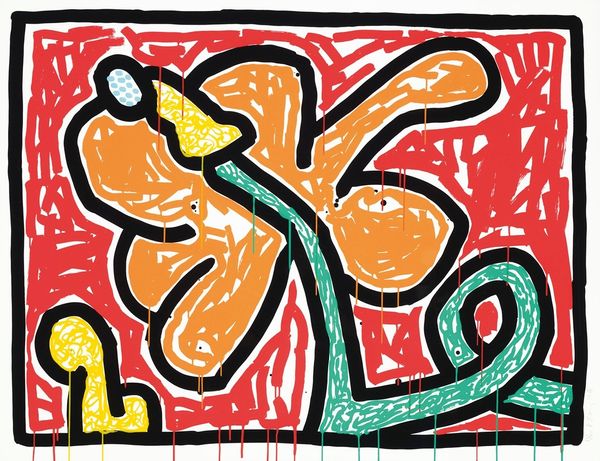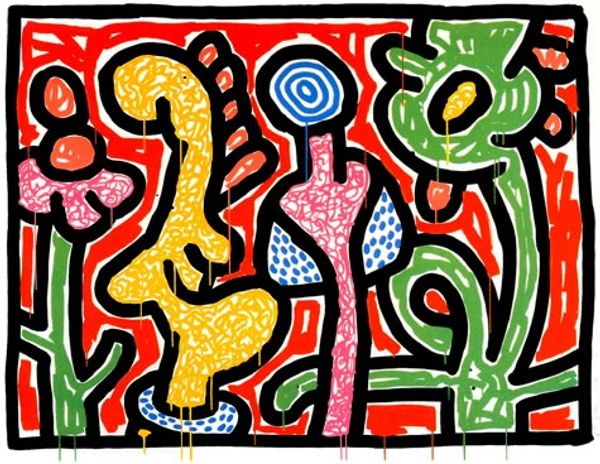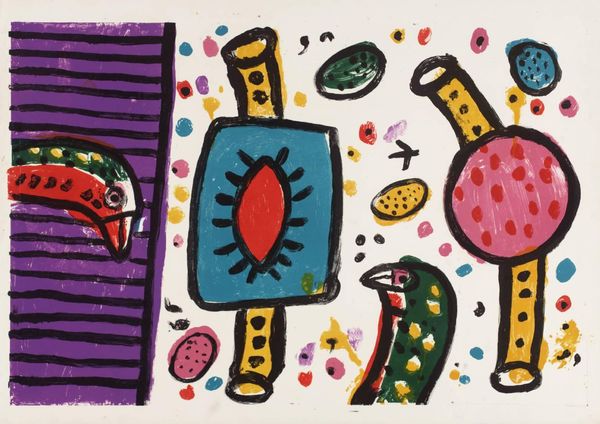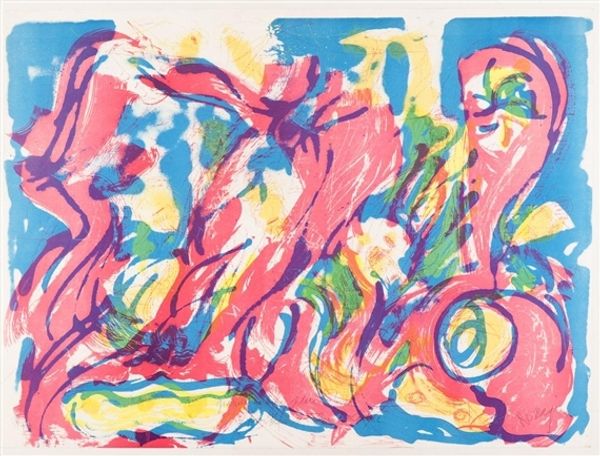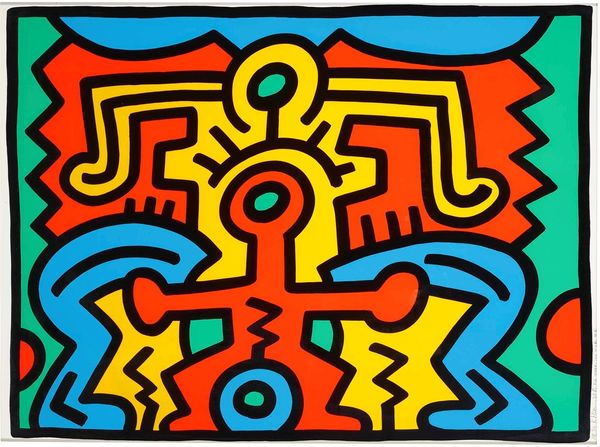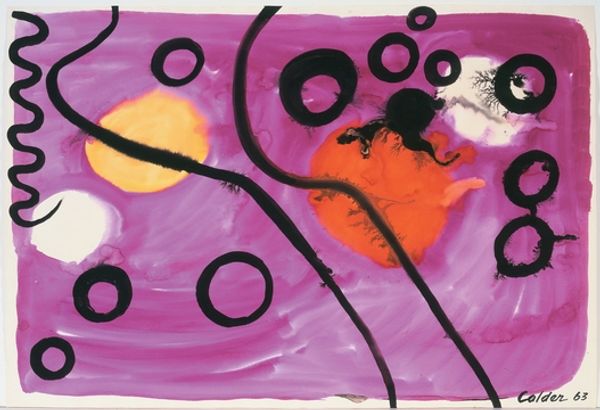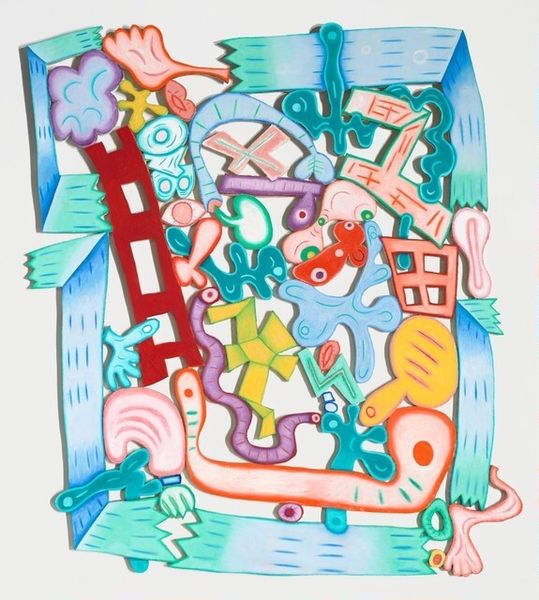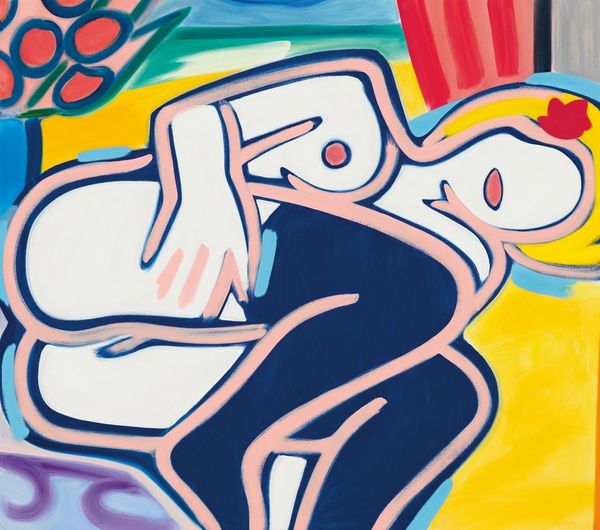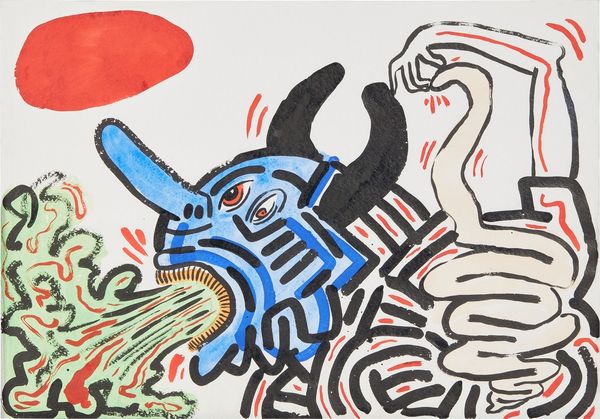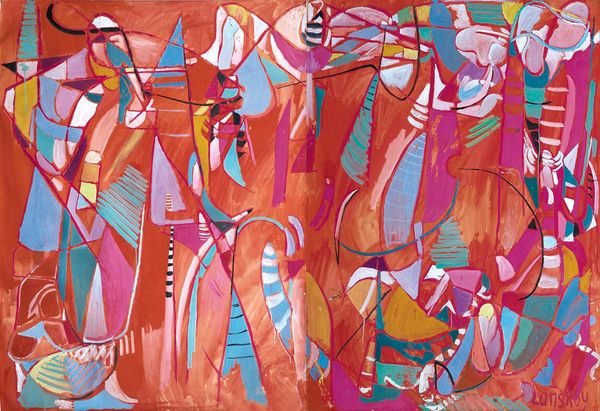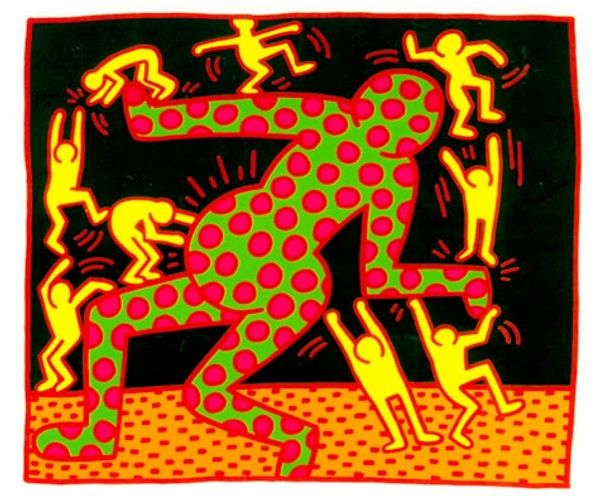
#
neo-pop
Copyright: Modern Artists: Artvee
Curator: Here we have “Plate One, from; Flowers 1-5”, a screenprint dating back to 1990 by Keith Haring. It features these vibrant, almost cartoonish figures set against a bright blue background. What are your first impressions? Editor: It's so playful, almost deceptively so. The boldness of the colours and lines, that feeling of movement… it gives me a sensation of naive joy, but there’s a lingering…melancholy? Curator: That tension, I think, is key. Haring created this work near the end of his life, after his AIDS diagnosis. Seen in that context, the image speaks to cultural loss, about collective suffering and identity. The flowers—or, perhaps, representations of human figures blooming as flowers, point to hope. Editor: Yes, it does possess a deeply felt hopefulness. Those bright colours against the simplified shapes, there’s a distinct feeling of celebration—yet, like tears, those drips, particularly the greens, feel somewhat like decay, a symbol of illness, possibly? Or is it related to the tradition of vanitas painting and the symbolic associations of flowers as representing life’s fragility? Curator: Definitely. The linear style, the flatness… it flattens everything, illness, pleasure. But there is such subversive strength, so that everything cannot be flattened: a person is so much more than this simple form, no matter what happens, no matter the historical or political landscape of the period. We are invited to reclaim that identity, especially when faced with adversity, or those challenges that seek to render us invisible. Editor: It’s interesting to see this bold simplification next to a very visceral topic of decay. You cannot but help to wonder: how does this image speak about hope, love, care in the face of mortality? In my eyes, this painting becomes about resistance and survival. Curator: I think you’ve articulated it beautifully. It is about presence, about a politics of representation. And it's through this simplicity, in this iconic image, that he makes a lasting impact, still moving viewers so strongly today. Editor: Indeed, by imbuing familiar shapes with heightened emotion and symbolism, Haring invites us to contemplate themes of hope, beauty, love, fragility, but also collective pain.
Comments
No comments
Be the first to comment and join the conversation on the ultimate creative platform.
